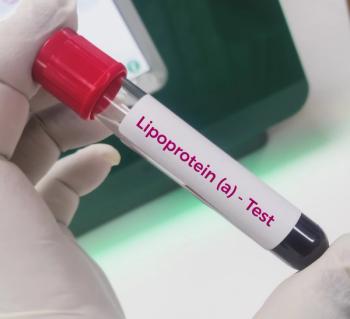
- MHE November 2019
- Volume 29
- Issue 11
How Can Hospitals Invest in Affordable Housing?
How nonprofit hospitals and health systems are getting involved with housing.
Although investing in housing construction and rehabilitation is relatively new for most hospitals and health systems, a new guide argues that hospitals’ institutional assets, focus on health outcomes, and position as anchor institutions make them well-positioned to invest in affordable housing.
The Urban Institute surveyed nonprofit hospitals to learn more about current practice and motivations, considerations, and challenges they face in addressing housing needs of their patients and communities.
“To our knowledge, our survey was a first attempt to systematically understand how nonprofit hospitals and health systems are approaching housing-related activities, including investments,” says Kathryn Reynolds, policy program manager for the Research to Action Lab at the Urban Institute.
Overall, 45 nonprofit hospitals and health systems participated in the survey. Due to the small number of study participants, some experiences and insights may not have been captured, and findings are not generalizable and representative. “However,” Reynolds says, “these findings resonated well in our subsequent roundtable discussions with experts and hospital administrators and gave us some sense of the information and tools that may be needed to encourage more nonprofit hospitals and health systems to consider housing investments.”
Related article:
Key findings include the following:
- Nonprofit hospitals are largely aware of housing needs in their communities or within their patient population and many hospitals are undertaking efforts to address the issue.
- Hospitals see housing as a platform for addressing social determinants of health but are concerned about the time and resources needed.
- Hospitals most often dedicate health services, administrative capabilities, and political leverage to support housing initiatives.
- Hospitals seem less interested in direct financial investments in housing.
- Hospitals that are involved in affordable housing development most often provide funding, but at modest levels.
- Hospitals that make affordable housing investments partner with financial intermediaries.
- Hospitals may need more information about the implications of federal policies for housing investments.
Many
“However, little is known about the nonprofit hospitals and health systems that are exploring or starting to implement housing-related projects, or what could help motivate the hospitals and health systems that are not involved to make housing investments,” Reynolds says. “Further, federal, state, and local funding to create, preserve, and operate affordable apartments falls far short of the need across the country, leading to a shortage of affordable and quality housing, especially for low- and moderate-income families.
“Non-profit hospitals and health systems, as anchor institutions rooted in place and with missions to improve community health, are well-situated to contribute funding to alleviate this problem,” she says.
A guide
The Urban Institute publication provides guidance to hospitals and health systems that wish to invest in affordable housing development projects. The resource shares actionable, research-informed strategies and examples of how nonprofit hospitals and health systems can help fill the financing gap that often prevents affordable housing from being built or rehabilitated. The guide describes key steps to consider when planning and implementing an investment strategy:
- Assess social determinants of health in the community.
- Identify the target population or community for housing investment.
- Engage with the community who will be directly impacted.
- Understand the policy context that drives the institution’s investment actions.
- Determine an affordable housing investment strategy.
- Select an implementation partner or partners to assist in reaching the goal.
- Identify internal champions.
- Measure the progress made.
Three concrete ways in which hospitals and health systems can support a housing investment project, include:
- Donating land or buildings or swapping land with a housing developer;
- Using their financial position to enhance credit or lowering borrowing costs, or provide a direct loan for construction, renovation, or rehabilitation costs; and
- Contributing staff time or capital to encourage others to invest in affordable housing development.
There are three things health care executives should know, according to Reynolds:
- Affordable housing is a proven asset class with a demonstrated history of predictable returns and a well-developed network of developers and intermediaries. An investment in housing allows health institutions to serve their mission and address upstream social determinants of health while allowing the hospital to make subsequent investments in future projects with “revolving” dollars, according to Reynolds.
- Nonprofit hospitals and health systems have institutional assets that make them especially well-suited to making investments in affordable housing, especially with a knowledgeable partner, such as a community development financial institution or a non-profit developer. These assets include:
- Financial assets for charitable investments, such as endowments, pensions, and insurance reserves;
- Non-financial assets that can be used to offset costs for development, such as land and buildings; and
- Their financial strength which can enhance credit or reduce risk of investments.
- Evaluation is a critical component to measuring success in any project, “but our survey and conversations with many hospital and health system administrators suggest that few housing investments-including those designed with specific health outcomes in mind-are systematically tracked and measured,” she says. “An evaluation would not only allow hospital leadership to understand the impact of their investment on patients and communities, but would also contribute to knowledge base of ‘what works’ to alleviate population or community-based housing-related issues.”
Articles in this issue
about 6 years ago
8 Ways to Optimize Your IT Operationsabout 6 years ago
Opinion: Navigating the Complexities of Value-Based Cancer Careabout 6 years ago
Readmission Trends for Hip and Knee Replacementabout 6 years ago
Strategies to Help Reduce Hospital Readmissions for Cancerabout 6 years ago
Approaches to Cancer Pain Managementabout 6 years ago
Accessibility and Affordability of Gene Therapyabout 6 years ago
Population Health Initiative Reduces Pediatric Hospitalization Rateabout 6 years ago
Biologics Build Oncology Drug Pipelineover 6 years ago
Baby Boomers and Millennials Want More Frequent CommunicationNewsletter
Get the latest industry news, event updates, and more from Managed healthcare Executive.






















































